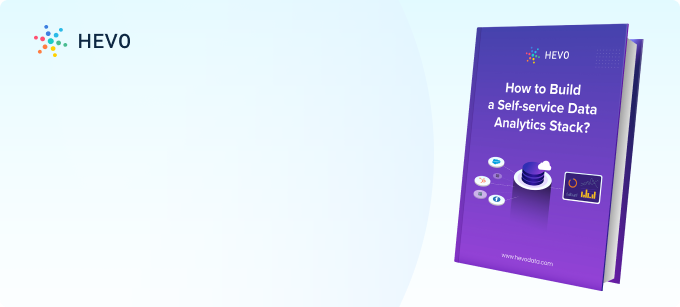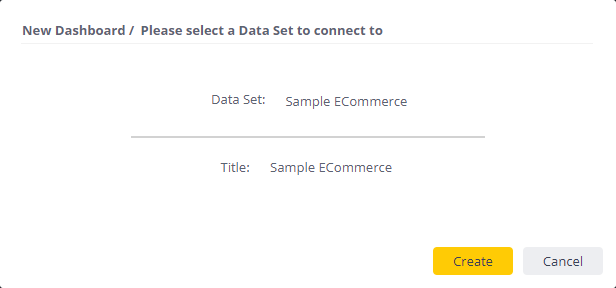Table of Contents
Introduction to MySQL
MySQL is the RDBMS(Relational Database Management System) based database system, which is made up of rows and columns. MySQL is an open-source database freely available for everyone to use. MySQL can be used for OLTP and OLAP use cases. SQL(Structured Query Language) is used to deal with the MySQL database. MySQL also allows for easy data analysis with its MySQL analytics tools and platform.
Understanding MySQL Analysis And How it Works
Absolutely! Here’s a revised version of the provided text, rewritten in a formal tone with emphasis on clarity, along with Markdown formatting for easy reading:
MySQL Analysis and Performance Optimization
MySQL analysis involves the careful examination of database queries to identify and address performance bottlenecks. Specialized analytics tools assist database professionals (DBAs) in optimizing MySQL databases faster and more precisely. When a database exhibits performance issues, MySQL analysis provides valuable insights into key metrics such as
- Query Throughput: The rate at which queries are processed.
- Query Execution Performance: The time required to execute individual queries.
- Connections: The number of active database connections.
- Buffer Pool Usage: How effectively MySQL utilizes memory for data caching.
By understanding these metrics, DBAs can pinpoint the root causes of performance issues.
Execution Plans and SQL Tuning
A core component of performance tuning is the generation of execution plans. These plans outline the steps MySQL will take to execute a given query. The SQL tuning process often involves analyzing numerous SQL statements to determine which ones require optimization. Each statement may necessitate a unique performance-tuning approach.
Benefits of MySQL Analyzers
MySQL analyzers provide DBAs with several key advantages:
- Rapid Bottleneck Identification: Quickly locate performance limitations.
- Isolation of Inefficient Operations: Pinpoint specific areas for improvement.
- Testing of Execution Plans: Evaluate potential query optimizations before deployment.
Armed with the insights provided by robust MySQL analysis tools, DBAs can implement targeted optimizations to enhance database performance.
Eliminate repetitive data requests and empower teams to self-serve insights with AI-driven automation.
🔹 Chat with Your Data – Ask in plain English, get instant answers
🔹 AI-Driven Query Handling – Automate routine data requests
🔹 Seamless Integration – Connect with your favorite data sources
🔹 More Strategic Focus – Spend less time on reports, more on insights
Evaluating MySQL Reporting Tools
Selecting the optimal MySQL reporting solution for your organization requires careful consideration of several key aspects:
- Ease of Use: A user-friendly interface is crucial for streamlining the report generation process. Seek out tools that provide intuitive navigation and straightforward workflows to enhance the overall data analysis experience.
- Range of Features: Consider the breadth of reporting capabilities offered by the tool. Standard MySQL reporting features are essential, but advanced functionalities such as the following can significantly enrich your analysis:
- Real-time reporting
- Predictive analytics
- Collaboration features for effective teamwork
- Scalability: The chosen tool should be able to accommodate the growth of your business and its data. Ensure that the solution can handle increasingly large datasets while maintaining optimal performance and speed.
Note: When choosing a MySQL reporting tool, it’s wise to explore established business intelligence (BI) tools, as they often excel in the areas mentioned above.
Next, we will look into some of the most popular MySQL data analysis tools.
MySQL Analytics Tools
Data analytics is more important than the available raw data for a business or management person to make decisions or define future business strategies.
In data visualization, we can depict data in figures, charts, bars, and graphs.
So here MySQL analytics tools come into action, there are a bunch of analytics and visualization tools available for free and paid license basis.
Here is a list mentioning a few of the MySQL analytics tools:
- MySQL Analytics Tools: Power BI
- MySQL Analytics Tools: Tableau
- MySQL Analytics Tools: Ubiq
- MySQL Analytics Tools: Sisense
1. Power BI
Power BI is Microsoft’s Data Visualization tool used to convert data from various sources to interactive dashboards. Power BI has a bunch of connectors to connect with data sources for visualization.
To create a dashboard will need below two products of Power BI:
- Power BI Desktop – to create dashboards
- Power BI Service- to analyze and view the reports
Steps to connect and create dashboard in Power BI
Step 1: Connect to BigQuery.
File menu -> Get Data -> Database -> MySQL database
Step 2: Select the MySQL table or view.
Get data -> MySQL -> Select Database -> Schema -> Table or View -> Load
Step 3: Select the required visualizations and fields from the source table for analytics purposes.
Pros of Power BI
- Can work for an extensive amount of data preparation
- Report preview is available for mobile devices
Cons Of Power BI
- The premium model is required to share the report
- Does not support Mac and Linux for report creation
2. Tableau
Tableau is the world’s most popular analytical and visualization platform, tableau helps to visualize and explore the data. Tableau is available in both free and paid versions.
Tableau is the world’s most popular analytical and visualization platform, tableau helps to visualize and explore the data. Tableau is available in both free and paid versions.
Steps to create an analytical dashboard using MySQL
Step 1: Connect to the MySQL database.
Click on Connect data -> MySQL -> Enter Database details ->Sign IN
Step 2: From the database select Cdata.
Step 3: Select the required figures, graphs, charts, and arrange them accordingly.
Advantages of Tableau
- High Performance
- Dashboards are mobile-friendly
- Upgradation is very easy
- Easy to use
Disadvantages of Tableau
- Versioning is poor
- Auto Refresh to report is not available.
- SQL knowledge is a must
- Manual efforts required

3. Ubiq
Ubiq is a web-based analytics tool used to create dashboards and visualization reports. We can easily create reports such as any system performance monitoring, sales data, drill-down or drill-through reports.
Steps to create a report using Ubiq
Step 1: Download the connection client and install, select for the remote or local database.
Step 2: Now add a database to select data.
Step 3: Once you add the database will redirect to the project page, create the project and start building the reports.
4. SiSense
Sisense is a business intelligence (BI) software company, and a popular MySQL database analysis tool, that provides an end-to-end, AI-driven analytics platform designed to help businesses make data-driven decisions. Founded in 2004, Sisense has grown to serve a global customer base, offering tools for data visualization, analytics, and integration with various data sources.
Steps to Create a Dashboard with Sisense.
Step 1: On the Analytics page, you can either click the “+” button above the Dashboards list or right-click on the folder menu and select “New Dashboard.“

Followed by the below options to connect you data.

Step 2: Choose the ElastiCube or Live data model you want to work with by clicking on the name of the Data Set displayed.
Step 3: Click on the name of the Title and give a name to your dashboard.
Step 4: Click on “Create.”
You will then be guided through creating your first widget in the Widget Wizard, described in detail in the “Adding Widgets to a Dashboard” section.
Key Benefits of Professional MySQL BI Tools
- Accessibility for Everyone: Modern BI tools streamline data analysis for all users, simplifying the extraction of insights from complex data sets. Employees can easily build MySQL queries without requiring coding expertise.
- Easy Database Connection: Top-tier BI MySQL analytics software provides seamless integration with MySQL databases, minimizing manual data preparation and potential errors. Scalability ensures optimal MySQL performance regardless of workload size.
- Intuitive Interface: User-friendly interfaces enable intuitive query building through drag-and-drop actions. This fosters self-service data visualization without the need for coding.
- Self-Service Environment: MySQL BI solutions empower users to independently create and customize queries. This promotes in-depth data exploration and drives improved business outcomes.
- Automated Analysis: Automate report generation and data updates with advanced BI tools. This frees up time for strategic insights while keeping information current.
- Fact-Based Decision-Making: User-friendly BI tools facilitate data-driven decision-making across the organization. This fosters collaboration and strengthens a data-centric culture.
- Improved Communication and Collaboration: BI solutions provide a centralized online environment for data sharing. This enhances teamwork and aligns employees around shared insights.
Conclusion
There are many more MySQL analytics tools are available and each one has its own advantages and disadvantages. So based on the use case we can choose the best fit tool for analysis purposes.
Hevo is a No-code data pipeline. It has pre-built integrations with 150+ sources. You can connect your SaaS platforms, databases, etc. to any data warehouse of your choice, without writing any code or worrying about maintenance. Interested in trying Hevo? Sign Up for the 14-day free trial.
FAQs
Can MySQL be used for data analysis?
Yes, MySQL can store and query large datasets for data analysis. It supports aggregation, filtering, and joins. For advanced analysis, export data to tools like Python, R, or BI platforms.
How to check performance of MySQL database?
Use tools like MySQL Workbench Performance Dashboard, EXPLAIN for query analysis, or monitor metrics like query execution time, indexing, and resource utilization with tools like Percona Monitoring and Management (PMM).
How to visualize MySQL data?
Export data to visualization tools like Tableau, Power BI, or Google Data Studio, or connect MySQL directly to these tools using database connectors for live visualization.









